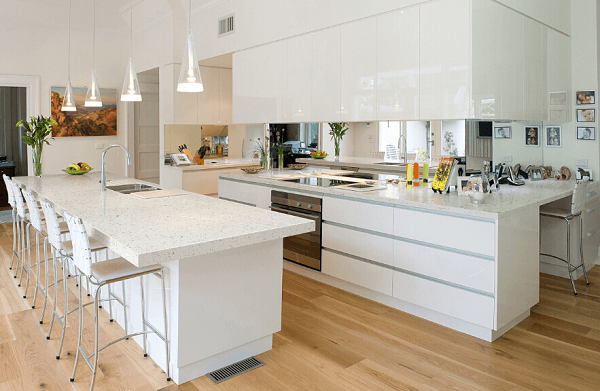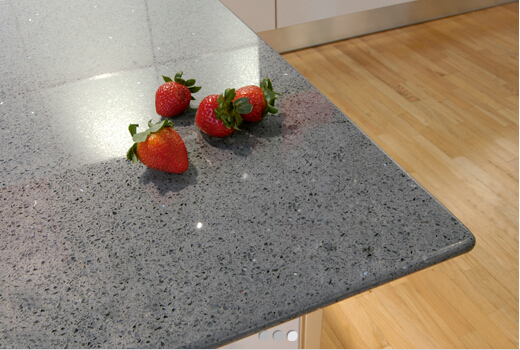
Quartz stone slabs have become popular for countertops, flooring, and other surfaces in residential and commercial spaces due to their durability, versatility, and aesthetic appeal. One of the key decisions that consumers face when selecting quartz slabs is choosing the right thickness. In this article, we'll explore the various thickness options available for quartz stone slabs and discuss the factors to consider when making this decision.
Quartz stone slabs are typically available in several standard thickness options, the most common being 1 centimeter (cm), 2 cm, and 3 cm. These thicknesses refer to the thickness of the slab itself and do not include any additional edging or support structures.
Also known as thin slabs, 1 cm quartz slabs are the thinnest option available.
Despite their thin profile, these slabs are still durable and suitable for use in various applications.
1 cm slabs are often used for wall cladding, backsplashes, and other vertical applications where weight is less of a concern.
Due to their thinner profile, 1 cm slabs may require additional support or reinforcement when used for horizontal surfaces like countertops.
2 cm quartz slabs are the most commonly used thickness option for countertops and other horizontal surfaces.
These slabs provide a good balance of durability and weight, making them suitable for a wide range of applications.
2 cm slabs are popular for kitchen and bathroom countertops due to their strength and resilience.
They are also commonly used for flooring and other horizontal installations where a thicker profile is desired.
3 cm quartz slabs are the thickest option available and offer the highest level of durability and stability.
These slabs are well-suited for heavy-duty applications where maximum strength is required.
3 cm slabs are often preferred for outdoor installations, such as outdoor kitchen countertops or patio surfaces, where they can withstand exposure to the elements.
While 3 cm slabs provide superior strength, they are also heavier and may require additional support during installation.

When selecting the thickness of quartz stone slabs for your project, several factors should be taken into consideration:
Application: Consider the intended use of the quartz slabs, whether it's for countertops, flooring, wall cladding, or outdoor installations.
Support and Installation: Evaluate the structural requirements and installation considerations, such as the need for additional support or reinforcement.
Aesthetic Preferences: Determine the desired look and feel of the finished surface, as thicker slabs may have a different aesthetic impact compared to thinner ones.
Budget: Take into account the cost implications associated with different thickness options, as thicker slabs generally tend to be more expensive due to the additional material and weight.
Choosing the right thickness for quartz stone slabs is an important decision that can impact your project's durability, aesthetics, and functionality. By understanding the available options and considering factors such as application, support requirements, aesthetic preferences, and budget, you can select the thickness that best suits your needs and achieves the desired outcome for your space. Whether you opt for the thin profile of 1 cm slabs, the standard thickness of 2 cm slabs, or the maximum strength of 3 cm slabs, quartz stone offers a versatile solution for a wide range of residential and commercial applications.